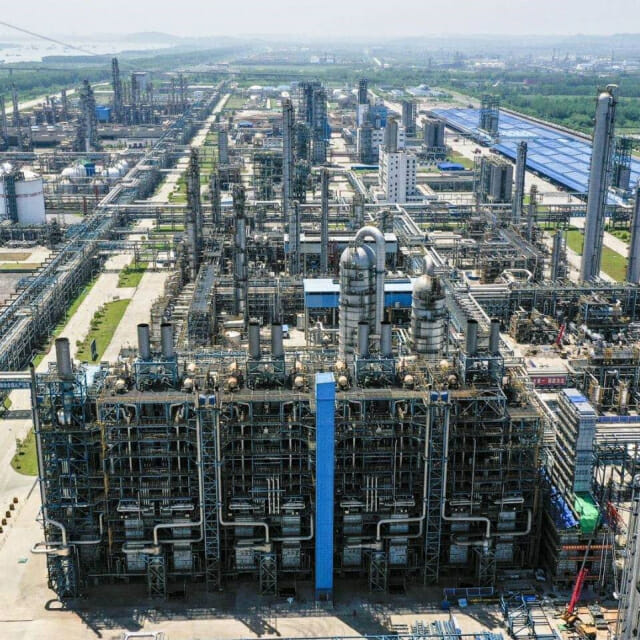
SK Innovation announced on the 4th that its subsidiary SK Global Chemical and China’s largest petroleum company Sinopec jointly established the petrochemical company’China-Korea Petrochemical’, which completed the expansion of petrochemical facilities by the second half of the year and started full-scale operation.
China-Korea Petrochemical is a core project of SK Group Chairman Choi Tae-won’s strategy of’China Insider’ and the largest petrochemical joint project between the two countries since Korea-China diplomatic relations in 1992.
China-Korea Petrochemical was established in October 2013, seven years after the investment discussion began in 2006. SK Global Chemical and Synopec invested a total of 3.3 trillion won at a 35 to 65 ratio. After 7 years of operation of the factory, it generated an operating profit of about 2.3 trillion won.
In October 2017, China and Han Petrochemical announced an additional investment plan of 740 billion won to expand petrochemical facilities such as 300,000 tons of ethylene, 300,000 tons of polyethylene, 300,000 tons of polypropylene, and 60,000 tons of butadiene. The investment was raised from the profits generated by China and Korea Petrochemical.
China Han Petrochemical completed the expansion of ethylene facilities in December of last year and began operation. It is known that the facility utilization rate is currently around 90%. The polypropylene and butadiene facilities were completed and put into operation last month.
China Han Petrochemical plans to produce’High Crystalline Polypropylene (HCPP)’, a high-quality and high-value chemical product with significantly increased strength at the newly expanded polypropylene facility. The facility expansion will be completed by June, and it will be converted to a 100% operation system from 2H12.
An official of the company said, “It is expected to secure a total production capacity of 3 million tons of petrochemical products, including 1.1 million tons of annual production of ethylene, 900,000 tons of polyethylene, 700,000 tons of polypropylene, and 190,000 tons of butadiene.” “I explained.

Ethylene and propylene, which are called’rice in the chemical industry’, are used in various fields such as home appliances, clothing, and automobile interior materials. The global ethylene market has grown at an annual average of 4% or more from 2016 to last year.
In addition, prices are rising due to a shortage of supply due to expectations of economic recovery following the supply of the Corona 19 vaccine and the suspension of large-scale petrochemical facilities due to a cold wave in Texas in February.
Related Articles

SK Global Chemical Creates Eco-friendly Plastic Ecosystem with SPC Pack

SK global chemical promotes construction of eco-friendly packaging material plant in China

POSCO and SK Global Chemical join forces to develop new lightweight materials

Na Kyung-soo SK Global Chemical “Waste Plastic Issue, Eco-friendly Innovation Opportunity”
Ethylene prices have risen to $1,133 per ton last month since the lowest point at $399 per ton in April of last year. The ethylene spread (ethylene price-naphtha price), which measures product performance, also rose 2.6 times from an average of 205 dollars per ton in April last year to an average of 538 dollars last month.
SK Global Chemical President Na Gyeong-soo said, “It is a difficult business environment due to the corona, but we tried to fully implement the investment plan of China-Korea Petroleum, which is the largest Korea-China representative industrial cooperation model in history, without any changes.” “We will contribute to enhancing the corporate value of the two companies by completely completing the process and continually discovering and expanding the Korea-China industrial cooperation model.”
